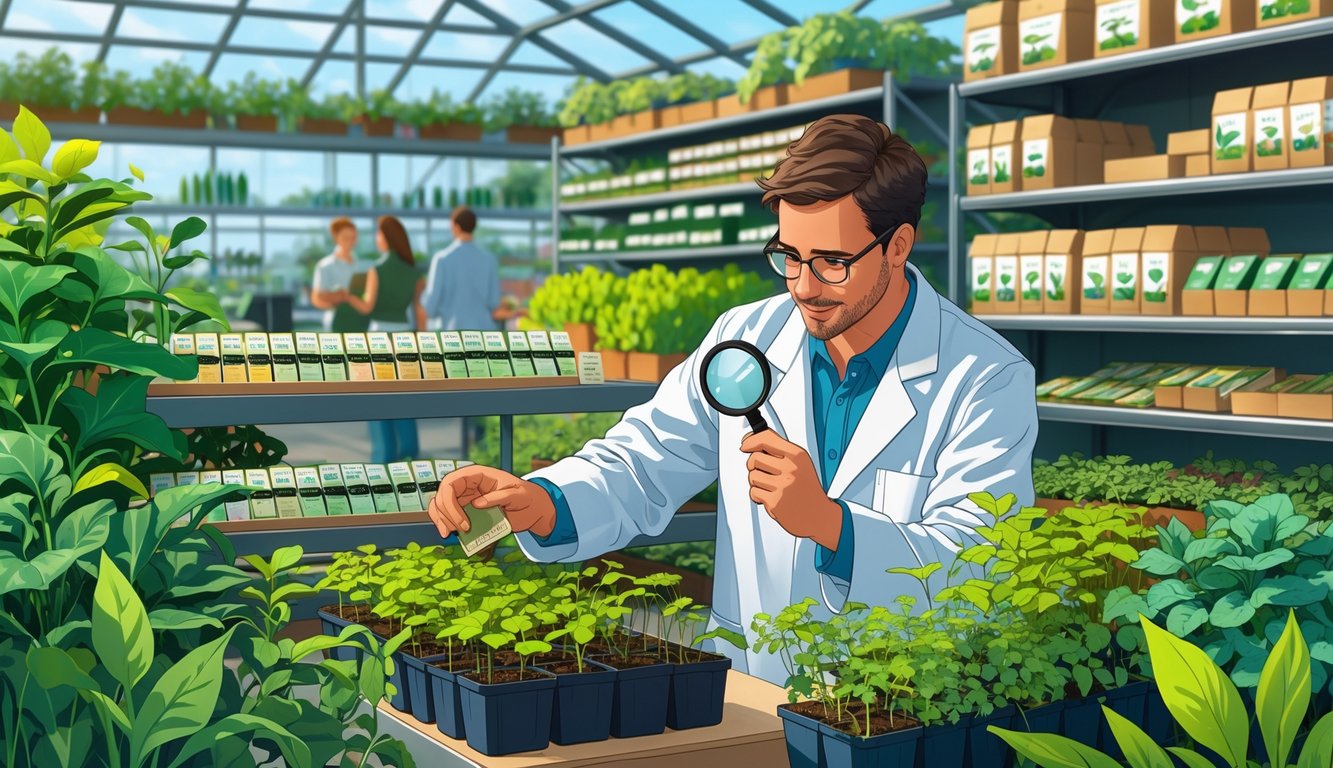
Sustainability and Environmental Benefits
I keep thinking about those free seed swaps at the local library—nobody ever brings up how a botanist’s “curated” seeds totally mess with big box supply chains. Like, if you care about pollinators or, I don’t know, actual wildlife, or even the carbon mess from shipping seeds across the planet, you’d have to admit this is way bigger than just “pick a pretty flower.” Most people? They’re not reading reports. They’re just hoping their porch boxes don’t die.
Supporting Pollinators and Local Wildlife
I’m trying not to be too snarky, but garden catalogs still push imported hybrids and slap “bee-friendly” on stuff that, honestly, isn’t even on a bee’s menu in your state. When botanist-picked seeds do show up at big retailers, it’s like, wow, suddenly there’s actual biodiversity. The National Seed Strategy roped in 300+ partners and tried to get native species into restoration projects, so now even those bland suburban fences might accidentally help wildlife.
One botanist (definitely not joking) told me, “Half these birds can’t eat what half these customers plant.” I mean, yeah. Native plants and those regional picks? They support way more bugs than all those imported ornamentals, and it’s not just birdwatcher trivia. Ditching monocultures and using what actually belongs in your zip code turns your yard into a real buffet for bees, birds, and whatever else is out there.
Reducing Carbon Footprint with Localized Seeds
All these climate plans sound good on paper, but when you actually look at the numbers—like, the American Seed Trade Association says local seed production slashes emissions, but who’s counting the fuel to ship lettuce seeds from Europe? Not the people selling them, that’s for sure. Even in my tiny garden, switching to local seed meant less water, fewer chemicals, and way less drama. Any farmer who’s bothered with a soil test will tell you the same.
Seriously, every mile those seeds travel just adds to the mess. And half the time, the plants aren’t even suited for the region, so people just dump fertilizer and water on them. “Localized seed” doesn’t sound cool, but it’s the only reason my tomatoes survived last year’s drought while the magazine picks all croaked. Whether you’re farming acres or just growing on a balcony, sustainable gardening always circles back to where you got your seed. Retail shelves? Still full of plastic packets nobody recycles. I don’t think anyone at the store even notices.
Challenges and Opportunities Ahead
I can’t get over that conference call where not one retailer knew how much shelf space they had before chasing these “botanist-certified” packets. The whole thing’s gotten weird—these niche seeds blew up overnight, and now everyone’s scrambling with backorders while pretending their inventory tracker isn’t broken. Meanwhile, you’ve got staff who can recite Latin but can’t explain “seed dormancy” to a customer who just wants flowers that don’t die.
Managing Surges in Demand
Forget about the supply chain for a second—try keeping up with spreadsheets when product codes change every week. Orders for new stuff like “Blue Monarch” tomatoes go wild after some influencer post, and then—bam—retailers are stuck with lettuce seeds instead of the wildflowers in their ads. Armstrong at the leadership summit said it: hyper-specific trends equal chaos, even if tech is supposed to help.
Honestly, the real nightmare isn’t just tracking stock—it’s mislabeled seeds and QA routines falling apart every spring. RFID tags, dashboards, whatever—if your team’s never seen a 60% order spike, none of that matters. Proof? I spent two hours last Friday swapping wild arugula for bulk calendula in a panic. Nobody noticed. At first.
Education for Retail Staff and Customers
Staff guides? Outdated before they’re printed. Customers expect instant results, and the staff gets blamed when perennials take six weeks instead of two. My grad advisor always said even “foolproof” seeds come with fine print, but the staff handout just says “sow in spring” and calls it a day.
Some stores tried QR code videos and “Ask Me Anything” days with botanists, but honestly, most people just want the shiniest seed packet. So now the help desk spends all day correcting wild claims from social media (like the person who swore her calendula glowed in the dark—nope). According to a crop industry analysis, almost nobody factors in regional adaptation, so I keep getting DMs about keeping cacti alive in Maine. Would it kill catalogs to show germination ranges or slap on a big “not for all climates” warning? Of course not, because marketing loves confusion. Guess who deals with it? Me, at 2 a.m., still answering emails.